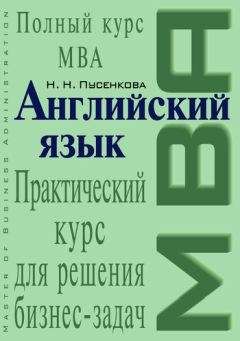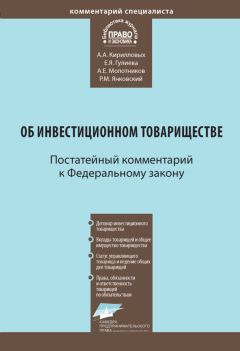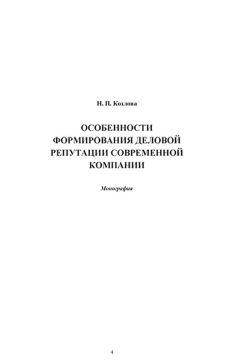Ознакомительная версия.
Очень важный принцип Баффета – невмешательство в оперативное руководство купленными компаниями. «Оракул из Омахи» покупает компанию, которая кажется ему привлекательной, и единственное оперативное решение, которое он принимает, – назначение или переназначение генерального директора компании и определение размера и порядка его вознаграждения. Как правило, вознаграждение предусматривает получение управляющими опционов на акции компании при достижении определенных результатов. Все остальные решения остаются на совести управляющего. В подавляющем большинстве случаев такой подход себя опять же оправдывает – стремясь повысить собственное вознаграждение, управляющие повышают и капитализацию компании, чего и добивается Баффет.
Минимизация рисков – один из краеугольных камней стратегии Баффета. По его собственному признанию, он скорее откажется от интересного приобретения, нежели пойдет на увеличение долгового бремени своей компании. Не случайно его холдинг Berkshire Hathaway является сейчас одним из всего лишь семи эмитентов, обладающих высшим кредитным рейтингом по версии агентства Moody’s – Aaa. Высокий кредитный рейтинг обеспечивает Баффету низкую стоимость капитала. Баффет полагает, что одним из главных зол, наносящих ущерб современной экономике, является неправильная система распределения вознаграждений среди участников финансового рынка. По его мнению, значительная часть транзакций на фондовом рынке рекомендуется и производится ради личного обогащения посредников – различного рода брокеров и трейдеров. Было бы вполне разумным ограничить число разрешенных транзакций для каждого человека в течение всей его жизни. Баффет приводит цифру 10 – не более десяти транзакций в жизни для каждого из участников финансовых рынков.
В числе компаний, на акции которых приходилась наибольшая доля в 47-миллиардных активах Berkshire по состоянию на 31 декабря 2005 г., – American Express Ameriprise Financial Anheuser-Busch, Coca-Cola, M&T Bank, Moody’s, PetroChina, Procter & Gamble, Wal-Mart, Washington Post, Wells Fargo, White Mountains Ins. Эти данные содержатся в годовом отчете Berkshire Hathaway за 2005 г. По итогам 2005 г. прибыль Berkshire Hathaway выросла на 16,6% до $8,5 млрд, или $5538 в пересчете на акцию. В 2004 году прибыль составила $7,31 млрд, или $4753 на акцию. За год было инициировано 5 сделок по поглощению. Балансовая стоимость акций Berkshire выросла на 6,4%. Акции Berkshire Hathaway не подвергались дроблению 41 год.
Source: www.k2kapital.org
Lesson 36
Corporate Finance
Read and translate the text and learn terms from the Essential Vocabulary.
Corporate Finance for Beginners
The role of a corporation’s management is to increase the value of the firm to its shareholders while observing applicable laws. Corporate finance deals with the strategic financial issues associated with achieving this goal.
Balance Sheet Approach to Valuation
Managers can make better decisions if they can predict the impact of those decisions on the firm’s value. A simple way of valuing the equity of a company is to subtract its liabilities from assets. However, this book value has little resemblance to the real value of the company. First, the assets are recorded at historical costs. Second, assets such as trademarks, loyal customers, and talented managers do not appear on the balance sheet but may significantly affect the firm’s ability to generate profits.
Another way to value the firm is to consider the future flow of cash. Since cash today is worth more than the same amount of cash tomorrow, a valuation model based on cash flow can discount the value of cash received in future years. Decisions about finances affect operations and vice versa. The firm’s working capital flows in a cycle, beginning with cash that may be converted into equipment and raw materials. Additional cash is used to convert the raw materials into inventory, which then is converted into receivables and eventually back to cash, completing the cycle. The goal is to have more cash at the end of the cycle than at the beginning.
The change in cash is different from accounting profits. A company can report consistent profits but still become insolvent. For example, if the firm extends customers increasingly longer periods of time to settle their accounts, even though the reported earnings do not change, the cash flow will decrease.
Note also the distinction between cash and equity. Shareholders’ equity is the sum of common stock at par value, additional paid-in capital, and retained earnings. Shareholders’ equity is on the opposite side of the balance sheet from cash. Shareholder equity changes due to three things: 1) net income or losses; 2) payment of dividends; 3) share issuance or repurchase. Changes in cash are reported by the cash flow statement, which organizes the sources and uses of cash into three categories: operating activities, investing activities, and financing activities.
The duration of the cash cycle is the time between the date the inventory is paid for and the date the cash is collected from the sale of the inventory. A company’s cash cycle is important as it affects the need for financing. The cash cycle is calculated as:
days in inventory + days in receivables – days in payables
Financing requirements will increase if either of the following occurs:
– Sales increase while the cash cycle remains fixed in duration.
– Sales remain flat but the cash cycle increases in duration.
Revenue, Expenses, and Inventory
A firm’s income is calculated by subtracting its expenses from its revenue.
However, not all costs are considered expenses; accounting standards and tax laws prohibit the expensing of costs incurred in the production of inventory. These costs must be allocated to inventory accounts and appear as assets on the balance sheet. Once the finished goods are drawn from inventory and sold, these costs are reported on the income statement as the cost of goods sold (COGS).
Assets can be classified as current assets and long-term assets. It is useful to know the number of days of certain assets and liabilities that a firm has on hand:
Accounts receivable (A/R)
Number of days of A/R = (accounts receivable / annual credit sales) (365).
This also is known as the collection period.
Number of days of inventory = (inventory / annual COGS) (365).
This also is known as the inventory period.
Number of days of accounts payable = (accounts payable / COGS) (365),
assuming that all accounts payable are for the production of goods (payables period).
A firm’s performance can be evaluated using various financial ratios (see lesson 37).
Bank loans can be classified according to their durations. There are short-term loans (one year or less), long-term loans (also known as term loans), and revolving loans that allow one to borrow up to a specified credit level at any time over the duration of the loan. Some «evergreen» revolving loans automatically renew at maturity.
It can be worthwhile to know where a firm’s cash is originating and how it is being used. There are two sources of cash: reducing assets or increasing liabilities or equity. A company uses cash by increasing assets or decreasing liabilities or equity.
Firm Value, Equity Value, and Debt Value
The value of the firm is the value of its assets, or the present value of the unlevered free cash flow resulting from the use of those assets. In the case of an all-equity financed firm, the equity value is equal to the firm value. When the firm has issued debt, the debt holders have a priority claim on their interest and principal, and the equity holders have a residual claim. The sum of the value of the debt and the value of the equity then is equal to the value of the firm, ignoring the tax benefits from the interest paid on the debt. Considering taxes, the effective value of the firm will be higher since a levered firm has a tax benefit from the interest paid on the debt.
The proportion of a firm’s capital structure supplied by debt and by equity is reported as either the debt to equity ratio (D/E) or as the debt to value ratio (D/V), the latter of which is equal to the debt divided by the sum of the debt and the equity.
Business risk is the risk associated with a firm’s operations. It is the undiversifiable volatility in the operating earnings (EBIT). Business risk is affected by the firm’s investment decisions. A measure for the business risk is the asset beta, also known as the unlevered beta. The return on assets of a firm can be expressed as a function of the risk-free rate and the business risk premium (BRP):
rA = rF + BRP
Financial risk is associated with the firm’s capital structure and magnifies the business risk of a firm. Financial risk is affected by the firm’s financing decision.
Total corporate risk is the sum of the business and financial risks and is measured by the equity (levered) beta. The business risk premium (BRP) and financial risk premium (FRP) are reflected in the levered (equity) beta, and the return on levered equity can be written as:
rE = rF + BRP + FRP
Debt beta is a measure of the risk of a firm’s defaulting on its debt. The return on debt can be written as:
rD = rF + default risk premium
The cost of capital is the rate of return that must be realized in order to satisfy investors. The cost of debt capital is the return demanded by investors in the firm’s debt; this return largely is related to the interest the firm pays on its debt. Managers used to believe that equity capital had no cost if no dividends were paid; however, equity investors incur an opportunity cost in owning the equity of the firm and they demand a rate of return comparable to what they could earn by investing in securities of comparable risk.
The return required by debt holders is found by applying the CAPM:
rD = rF + betadebt (rM– rF)
The required rate of return on assets can be found using the CAPM:
rA = rF + betaunlevered (rM– rF)
Using the CAPM, a firm’s required return on equity is calculated as:
rE = rF + betalevered (rM– rF)
Under the Modigliani-Miller assumptions of constant cash flows and constant debt level, the required ROE is
rE = rA + (1-t)(rA– rD)(D/E)
where t is the corporate tax rate.
The overall cost of capital is a weighted-average of the cost of its equity capital and the after-tax cost of its debt capital:
WACC = rE (E/VL) + rD (1 – t)(D/VL)
Assuming perpetuities for the cash flows, the WACC can be calculated as:
WACC = rA (1– t(D/VL))
Neglecting taxes, the WACC would be equal to the expected ROA because the WACC is the return on a portfolio of all the firm’s equity and debt, and such a portfolio essentially has claim to all of the firm’s assets.
Estimating Beta
In order to use the CAPM to calculate ROA or ROE, one needs to estimate the asset (unlevered) beta or the equity (levered) beta of the firm. The beta that often is reported for a stock is the levered beta for the firm. When estimating a beta for a particular line of business, it is better to use the beta of an existing firm in that exact line of business (a pure play) rather than an average beta of several firms in similar lines of business. Expressing the levered beta, unlevered beta, and debt beta in terms of the covariance of their corresponding returns with that of the market, one can derive an expression relating the three betas. This relationship between the betas is:
betalevered = betaunlevered (1 + (1– t) D/E)– betadebt(1 – t) D/E
betaunlevered = (betalevered + betadebt(1 – t) D/E) / (1 + (1– t) D/E)
The debt beta can be estimated using CAPM given the risk-free rate, bond yield, and market risk premium.
Unlevered Free Cash Flows
To value the operations of the firm using a discounted cash flow model, the unlevered free cash flow is used. The unlevered free cash flow represents the cash generated by the firm’s operations and is the cash that is free to be paid to stock and bond holders after all other operating cash outlays have been performed.
Ознакомительная версия.





